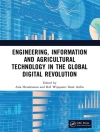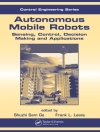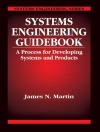This specially curated collection features five reviews of current and key research on fruit losses and waste.
The first chapter reviews the magnitude of losses and waste of fruit and vegetables as well as key issues in estimating losses. It provides a detailed assessment of the main causes of losses and waste together with strategies for their prevention.
The second chapter assesses the adoption of new, non-destructive technologies as a way of measuring harvest maturity and improving sorting operations to minimise the risk of product loss and waste.
The third chapter outlines the importance of harvest management of apples and considers the importance of various factors associated with fruit physiology, maturation and ripening to reduce losses.
The fourth chapter reviews existing research in the preservation of fruit quality and reduction of post-harvest damage and loss by adopting suitable technologies and knowledge during post-harvest operation, storage management, transportation and marketing of mango fruit.
The final chapter explores the advantages and disadvantages of cultivating ripening-impaired tomato mutants. It describes how controlling tomato diseases in both pre- and postharvest operations can help avoid fruit losses.
Tabella dei contenuti
Chapter 1 – Losses and waste in fruits and vegetables: Elhadi M. Yahia, Universidad Autónoma de Querétaro, Mexico; and Jorge M. Fonseca, Food and Agriculture Organization of the United Nations (FAO), Italy; 1 Introduction 2 The magnitude of losses and waste of fruit and vegetables 3 Causes of losses and waste 4 Primary and secondary causes of losses and waste 5 Under-explored factors in losses and waste 6 Issues in estimation of losses and waste 7 Strategies to prevent losses and waste 8 Conclusions 9 Where to look for further information 10 References
Chapter 2 – Pre- and post-harvest strategies to optimize fruit quality and shelf life: Peter Toivonen, Pacific Agriculture and Agri-Food Canada, Canada; 1 Introduction 2 Managing biological variance to improve the success of post-harvest technologies 3 Measuring harvest maturity 4 Improved sorting operations 5 Post-harvest technologies and temperature control 6 Case study: post-harvest strategies in cherry cultivation in British Columbia 7 Conclusion 8 Where to look for further information 9 References
Chapter 3 – Advances in postharvest handling and storage of apples: Christopher B. Watkins, Cornell University, USA; 1 Introduction 2 Fruit quality assessment 3 Harvest maturity and harvest indices 4 Plant growth regulators 5 Harvest, handling and grading operations 6 Postharvest storage technologies 7 Comparing and assessing storage technologies 8 Postharvest treatments 9 Physiological disorders 10 Summary 11 Where to look for further information 12 References
Chapter 4 – Post-harvest storage management of mango fruit: Noam Alkan, Agricultural Research Organization (ARO), Volcani Center, Israel; and Anirudh Kumar, Agricultural Research Organization (ARO), Volcani Center, Israel and Indira Gandhi National Tribal University (IGNTU), India; 1 Introduction: the mango fruit 2 Harvest operations 3 Post-harvest operations: managing mango fruit diseases 4 Post-harvest operations: use of ethylene, 1-MCP, modified and controlled atmospheres, waxes and edible coatings 5 Post-harvest operations: quarantine treatments 6 Preparing fruit for market 7 Conclusions 8 Where to look for further information 9 Abbreviations 10 References
Chapter 5 – Understanding and improving the shelf life of tomatoes: K. Wang and A. K. Handa, Purdue University, USA; and A. K. Mattoo, USDA-ARS, USA; 1 Introduction 2 Natural variability 3 Ripening mutants 4 Molecular determinants 5 Role of cell wall proteins 6 Role of epidermal waxes 7 Hormonal regulation 8 Controlling pathogen-based impairments 9 Pre-harvest strategies 10 Post-harvest chemical application 11 Post-harvest management 12 Conclusion and future trends 13 Where to look for further information 14 Acknowledgements 15 References
Circa l’autore
Dr Autar Mattoo is Research Leader of the Vegetable Laboratory at the USDA’s Henry A. Wallace Research Center, USA is internationally-renowned for his research on tomato physiology.












